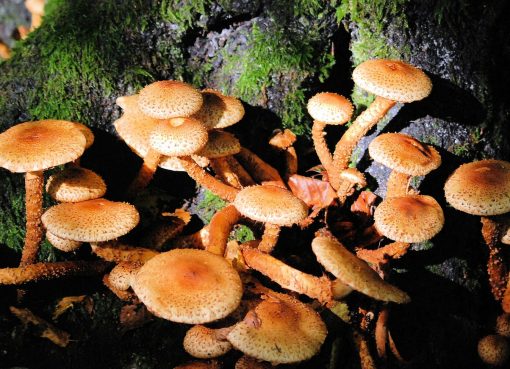Dr. Probodh Borah
Professor & Head, Department of Animal Biotechnology
College of Veterinary Science, AAU, Khanapara, Guwahati-781022

Source: https://commons.wikimedia.org/wiki/File:Smed.jpg
Can we dream of such a miracle in medicine one day when an accidentally lost, cut or amputated hand or leg can completely regenerate like before? Although the currently available knowledge and technologies are not in a position to suggest such a possibility in the near future, some latest developments in regenerative research basically centred around a ‘miraculous’ flatworm have at least brought a ray of hope towards that possibility some time in future!
Although humans and other mammals possess some regenerative ability, such as the ability to heal wounds but they cannot regenerate a whole organ as such. A few types of tissue like the liver and bone marrow in human can regenerate. Similarly, the outer layers of the skin and the inner layers of the intestine can also regenerate. When we suffer from a severe injury, the best expected recovery is to have complete healing of the wound. But this process is almost like closing the wound and cleaning the debris, which in most cases, leaves a scar. A few other animals like starfish, salamanders and crabs can, however, regrow a damaged or injured tail or a leg.
Planarian flatworms, one of nature’s little wonders, have amazing regenerative ability. If you split a planarian transversely in the middle, within around 3 weeks you will have two identical flatworms; even when you cut once more up, each piece will be able to regenerate into an entire flatworm. In a recent work conducted in Stanford University in 2018, Nelson Hall, a doctoral student of bioengineering, split a planarian flatworm into four pieces. Although the segment with its head is separated from the other three pieces, surprisingly within 3 weeks, all the four pieces grew into complete flatworms individually. In his experiment, Hall observed that each piece of planarian with no tail and no head could regrow in just 3 weeks. In the first week, two tiny spots appeared on the piece of the flatworm which later grew as eyes of the new worm. By day 12, each of the pieces developed new translucent head and tail. They turned brown in another week and by then, the new grown planarian could eat using a white tube called the pharynx.

Source: https://commons.wikimedia.org/wiki/File:Neoblastos.jpg
It has been reported recently that planarians can recover from being cut up into as many as 279 tiny pieces, each of which regenerates into a new worm! Researchers around the world are now trying to understand how the planarians can regenerate their entire bodies, an ability humans can only dream of now.
Planarians are flatworms belonging to the species Schmidtea mediterranea. They are freshwater triclads found in some coastal areas and islands in the western Mediterranean (Catalonia, Menorca, Mallorca, Corsica, Sardinia, Sicily, and Tunisia). Triclads are turbellarian flatworms which have an intestine with one anterior and two posterior branches. They are intolerant to high temperature and cannot tolerate water temperatures of 25–27 °C or above. However, they tolerate variations in the acidity of water within a pH range of 6.9–8.9.
Planarians can reproduce both sexually and asexually and has a limitless capacity to regenerate themselves. The regenerative capacity is used by some planarians to reproduce without having sex. These asexual planarians split their bodies in two and each half grows into a new planarian. Within the same species of planarians, some may reproduce sexually by laying eggs after mating.
In 2011, researchers discovered that regeneration in planarian flatworms depends on the activity of stem cells or ‘neoblasts’ distributed throughout their body. In another recent study, Erin Davies of National Cancer Institute, Maryland, USA observed the cellular mechanisms that guide development through the planarian’s life cycle and found that they have adult pluripotent stem cells (PSCs) that mediate the process of tissue homeostasis and regeneration. While in most animals including mammals PSCs are found only in the embryos, the planarians sustain their embryonic PSCs throughout their life cycle.
In an interesting study by Adler et al. (2014) with an aim to identify genes that are activated over the course of the regeneration process, lesions were intentionally induced in Schmidtea mediterranea using a technique of ‘chemical amputation’ in which sodium azide is applied to specifically damage the pharynx of the flatworms. Then using microarray and RNAi technologies, they discovered that a transcription factor, FoxA, plays the greatest role in regenerating the pharynx from the neighbouring stem cells or neoblasts. Interestingly, FoxA is hitherto known to play a significant role in development of the pharynx in the sea anemone and in the nematode Caenorhabditis elegans, as well as in regulating the development of the intestine in vertebrates.
Scientists now hope that understanding the process of regeneration in planarians further could one day lead to development of ways to use human stem cells to regrow healthy limbs or organs to replace the damaged or severed ones. A greater understanding of the efficient regenerative mechanism in planarians may also have great implications in future in the treatment of cancer, degenerative diseases, and some other conditions.
References:
Adler, C. et al. (2014). Selective amputation of the pharynx identifies a FoxA-dependent regeneration program in planaria. eLife 3: e02238. doi:10.7554/eLife.02238.
Sedeer el-Showk (2014). Unravelling How Planaria Regenerate. Accumulating Glitches, exploring the grandeur of evolution, Scitable by Nature education, https://www.nature.com/scitable/blog/accumulating-glitches/unravelling_ regeneration_in_planaria/ (Retrieved on 26.05.2023).
Kalomiris, M. (2020). Using flatworm regeneration to study stem cells. Erin Davies brings flatworm animal model to NIH. The NIH Catalyst. 28(5). https://irp.nih.gov/catalyst/28/5/using-flatworm-regeneration-to-study-stem-cells (Retrieved on 26.05.2023).
Quirós, G. (2018). These flatworms can regrow a body from a fragment. How do they do it and could we? Shots – Health News from NPR. https://www.npr.org/sections/health-shots/2018/11/06/663612981/these-flatworms-can-regrow-a-body-from-a-fragment-how-do-they-do-it-and-could-we (Retrieved on 26.05.2023).



